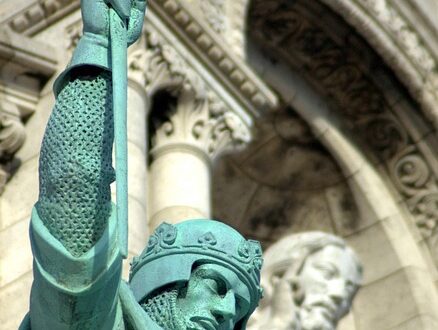The residents of North Carolina were genuinely honest, peace-loving, and good-natured; this is especially true when corrupt rulers and unfair laws do not provoke them. Although a large percentage of the population had fled from other colonies to escape the hand of the law or run away from debts, many were strong Christian men and women. As the years passed, Religion soon spread to North Carolina as in other colonies. Before the year 1703, there was no clergyman resident in North Carolina. Quakers, popularly referred to as The Religious Society of Friends, formed by George Fox in 1652 in England. Quakers were the definitive description of an anti-authoritarian Religion. They treated Indians, blacks, and women as equals and had no minister. Quakers were known to respect all persons and human life. They also refused to take up arms. The Quakers were considered by many to be radical Puritans because they adhered strictly to many Puritan convictions. Its Charismatic leader visited many provinces and made several converts, resulting in the Quakers becoming numerous. Most of their teachings, such as the “Light of Christ” in every person and the concept of a church of individuals generated by the Holy Spirit, were considered heresy by their contemporaries. As such, they faced severe persecution. By 1680, more than 10,000 Quakers were in prison, and about 243 more had died from extreme torture. The intense wave of persecution impelled Quakers to seek refuge in lands where they could enjoy freedom of worship.
Most Quakers moved to New Jersey, where they enjoyed more freedom and became well-rooted. Later, in 1681, William Penn, a Quaker leader, parlayed a debt owed by King Charles II to his father into a charter for the province of Pennsylvania; several more took this opportunity to seek refuge in a land where they might worship freely. By the year 1685, more than 8,000 Friends moved to Pennsylvania. Henry Philips and his wife Hannah introduced Quakerism to North Carolina in about 1665 when they arrived from Salem, Massachusetts. They settled in a region then known as Albemarle. Their home may have been at Hertford in Perquimans County, North Carolina. Later, in 1672, William Edmundson and George Fox traveled to America and visited Henry Philips and his wife, the earliest known Quaker settlers at that side in the Albemarle region of what is now known as North Carolina. Soon, organized meetings took place around the Albemarle Sound area. George Fox visited North Carolina some months after Edmundson’s visit. He held several regional conferences and inaugurated a Quarterly Meeting of the Quakers, the first structured religious body in North Carolina. As time went on, Quakerism spread throughout the northeast corner of North Carolina, particularly in Perquimans and Pasquotank Counties. At this point, Quakerism represented the only form of organized Religion with no rival worship until later in the seventeenth century.
At first, Quakers settled near the coast along the sounds and rivers in North and South Carolina. The appointment of John Archdale as the Governor of the Carolinas in 1695 (a known Quaker) resulted in a significant development of Quaker political leadership. During his tenure in office, many Quakers were elected to the Assembly. As the last decade of the seventeenth century approached, Quakers became the dominant power in the Carolinas. Many more immigrated to the American Colonies in the 1660s, specifically in New Jersey and the Pennsylvania colony.
In the quest to establish and hold political power in North Carolina, there was an intense fight between the Anglicans and Quakers. Particularly noteworthy was the conflict that pitted Thomas Cary (A Quaker supporter) and Edward Hyde, a staunch Anglican supporter. Hyde eventually prevailed and became the Colony governor. However, the region experienced severe turmoil at this time because it was Cary’s stronghold, and many Bath citizens had served as Cary’s chief lieutenants. There were reports of constant destruction of properties, and the government and town courts were almost rendered useless because of the rebellion.
Interestingly, at the dawn of the 18th century, Quaker meetings were held in almost every colony except Connecticut. The meetings were held in private homes until 1715 when the first meeting house was constructed in Charles Town. Other monthly meetings in South Carolina were the Cain Creek Monthly Meeting, Bush River Monthly Meeting, Union County, New Garden, and Newberry County. Quaker meetings offer a time for quiet reflection and meditation. Attendees were often quietly listening rather than talking. A member could stand up and talk if he needed to express his thoughts. Most times, however, it was often the case that none of the members felt the need to speak for long periods. In time, worship meetings were not well attended.
As time went by, many Cain Creek and Bush River members moved on to Ohio. The Quakers were among the earliest settlers of South Carolina. Most of the Immigrants were from Bermuda, Barbados, etc. Several other Quaker ministers contributed significantly to Quaker migration. They brought about new experiences and narratives. Their numbers and power would eventually fade out in the long run. Some contributing factors included the arrival of the Crown government, immigration, their reluctance to take up arms in the coming war, and their custom of supporting anti-established-government opposition. By the start of the Revolutionary War, they were almost nonexistent.





